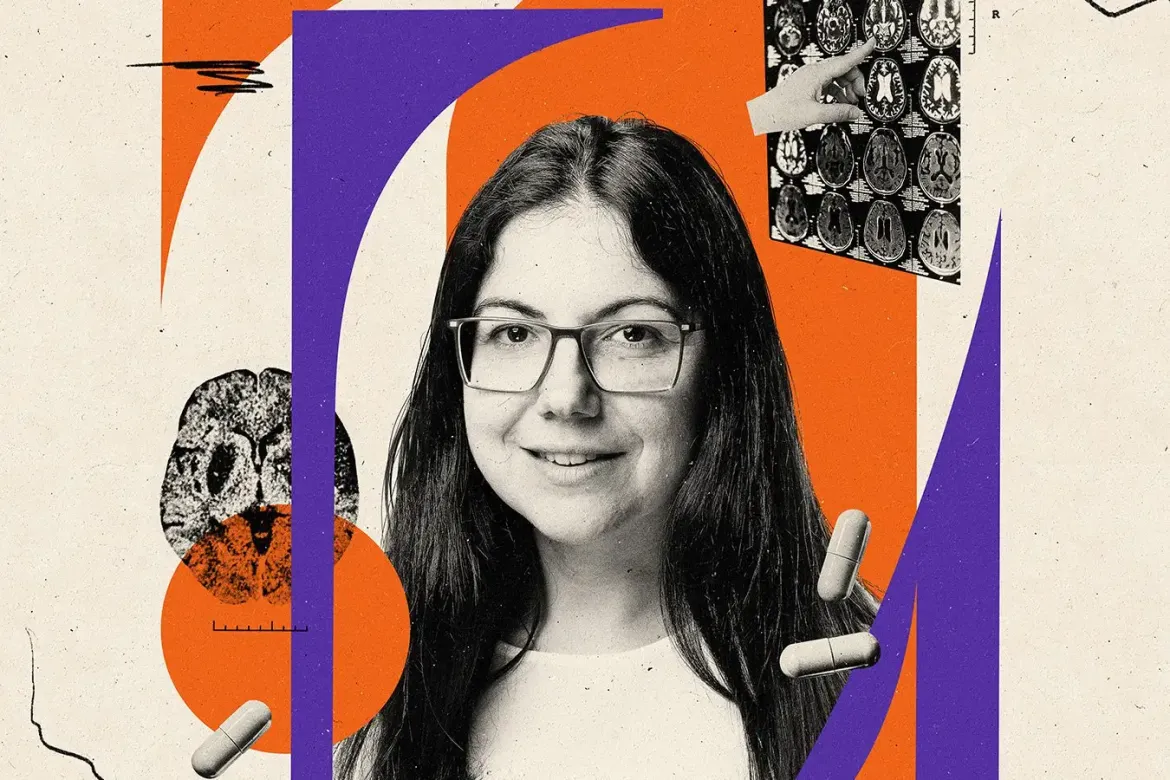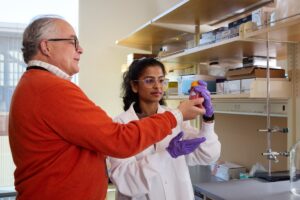The Neuroscientist Harnessing the Placebo Effect to Help Soothe Pain

Published in NewScientist by David Robson | February 6, 2024
For a phenomenon that has been known about for hundreds of years, there is still much to learn about the placebo effect — when a person’s health improves after taking a dummy treatment like a sugar pill. It is thought that the expectation of a positive outcome is behind it, and that a negative expectation is involved in its unwelcome opposite, the nocebo effect, which is when symptoms worsen. But questions remain about exactly how the mind affects the body in this way and why some people experience the effect more strongly than others.
Luana Colloca is among those tackling such questions. A neuroscientist and the director of the Placebo Beyond Opinions Center at the University of Maryland School of Nursing in Baltimore, Colloca and her colleagues have shown how specific gene variants can shape the extent of someone’s placebo response. They are now looking into how best to harness such effects to help soothe pain, which could decrease the use of prescription opioid drugs and the risk of addiction to them. They are also exploring the use of virtual reality, with results published last year showing that it can successfully reduce perceived pain and anxiety levels.
Colloca has rounded up all the latest findings on the placebo and nocebo effects in a book that she has co-edited called Placebo Effects Through the Lens of Translational Research. She spoke to New Scientist about her work on pain relief, whether the placebo effect can help in treating mental health conditions and how it impacts the way we use wearable tech.
Some people might imagine that placebo responses are fake or imaginary. What first persuaded you that they are real?
The placebo phenomenon is probably one of the oldest phenomena in the history of medicine, but also one of the most controversial. When I started researching this topic, I had a very sceptical approach. I had just achieved my medical licence and I was assigned as a PhD student to study placebo effects in Parkinson’s disease at the University of Turin in Italy. These patients had severe symptoms –tremors, rigidity and slow movement known as bradykinesia – and they were all candidates for deep brain stimulation, which consists of electrodes implanted in the subthalamic region, a bean-sized area that controls our movement and coordination. When we implanted the electrodes, we could record neuronal activities very precisely.
The patients had been receiving a drug by injection that increases brain dopamine levels and improves Parkinson’s symptoms. While undergoing the surgery, however, they were given an injection of a placebo, which they believed was the real drug – and they saw the same improvements in their symptoms. Despite this having no active ingredient, their rigidity somehow unlocked or the tremor decreased, and they reported feeling better. Through the electrodes, you could see a change in the neuronal activity along with the motor changes. That was my epiphany.
Can the placebo effect be seen with any treatment?
Virtually any treatment can have a placebo component. In some cases, it is the positive mindset that improves the symptoms: the conscious belief that the saline solution or sugar pill is an active drug that will help. But it can also be the result of learning from a previous experience with a drug, through a process called conditioning.
One team, for example, looked at whether you could use a placebo to reduce the amount of immune suppressant drugs needed after a transplant. They asked patients who were taking an immune suppressant twice a day following a kidney transplant to take a placebo that looks identical at two additional times in the day. Without any active ingredient, the placebo dose showed the same suppressed immune response. When a placebo effect is learned, you don’t need any conscious expectation or relief; in fact, a patient could be very negative but still experience some benefits.
What causes the effect?
Placebo responses depend on a sort of inner pharmacy – that is, the release of “endogenous” compounds by the body that resemble the active drugs we use to manage symptoms. Placebo pain relief, for example, comes from the release of endogenous opioids, cannabinoids and dopamine. We have genes that determine the way these endogenous chemicals are processed. The OPRM1 gene, for instance, encodes for the mu opioid receptor, while the FAAH and COMT genes encode for enzymes that break down cannabinoids and dopamine.
Someone carrying one variant of one of these genes can display higher placebo effects compared with those carrying another. In our lab, we have shown that single nucleotide polymorphisms – variants at a single base position in our DNA – on these three genes can predict the magnitude of the placebo effect.
Of course, these genetic variants alone can’t explain everything: we need to study how the environment and genes interact. Along these lines, we’re also pursuing research into early life and adversity. One of our ongoing projects suggests that people who have experienced trauma in early life show a smaller placebo effect, and so we are interested to see the way that someone’s life history might interact with their genetic variants to determine their placebo responses.
A lot of your work on placebos has centered on pain. Addiction to opioid painkillers is still a huge health crisis. Could a better understanding of the placebo effect help us reduce dependence on such drugs?
My colleagues and I hope so, along with a general shift in the perception of pain management. We now know that there is a strong “descending pain modulatory ystem”, a kind of top-down processing which means that our thoughts can have a role in our experience of pain. For example, research shows that catastrophizing thoughts – such as “there’s nothing I can do to reduce the intensity of my pain” and “it’s never going to get any better” – can amplify distress and reduce placebo effects. Cognitive behavioral therapy can help people to reframe their experiences and reduce catastrophizing, which, in turn, reduces the intensity of the pain that they are experiencing. Someone may not be able to eliminate their pain entirely, but they can aim to reduce it to do the activities that are so meaningful for them.
The idea now is to create personalised pain management. We could identify the people who can manage their pain with non-pharmaceutical approaches and so limit the use of prescribed opioids to those who don’t respond to the other pain therapeutics. The best treatment for you may be very different to the best treatment for me.
Have you tried this approach?
In one study, we worked with multi-trauma patients – people who have any kind of injury that you can imagine. We went to the bedsides and told them that “opioids are important in this condition, but we don’t expect you to be on opioids for the rest of your life”. We gave them this 20-minute education about the full spectrum of pain treatments, and they started needing less opioids to treat their pain while they were still in the hospital. We need multidimensional approach – there isn’t a single pill that will treat all pain.



